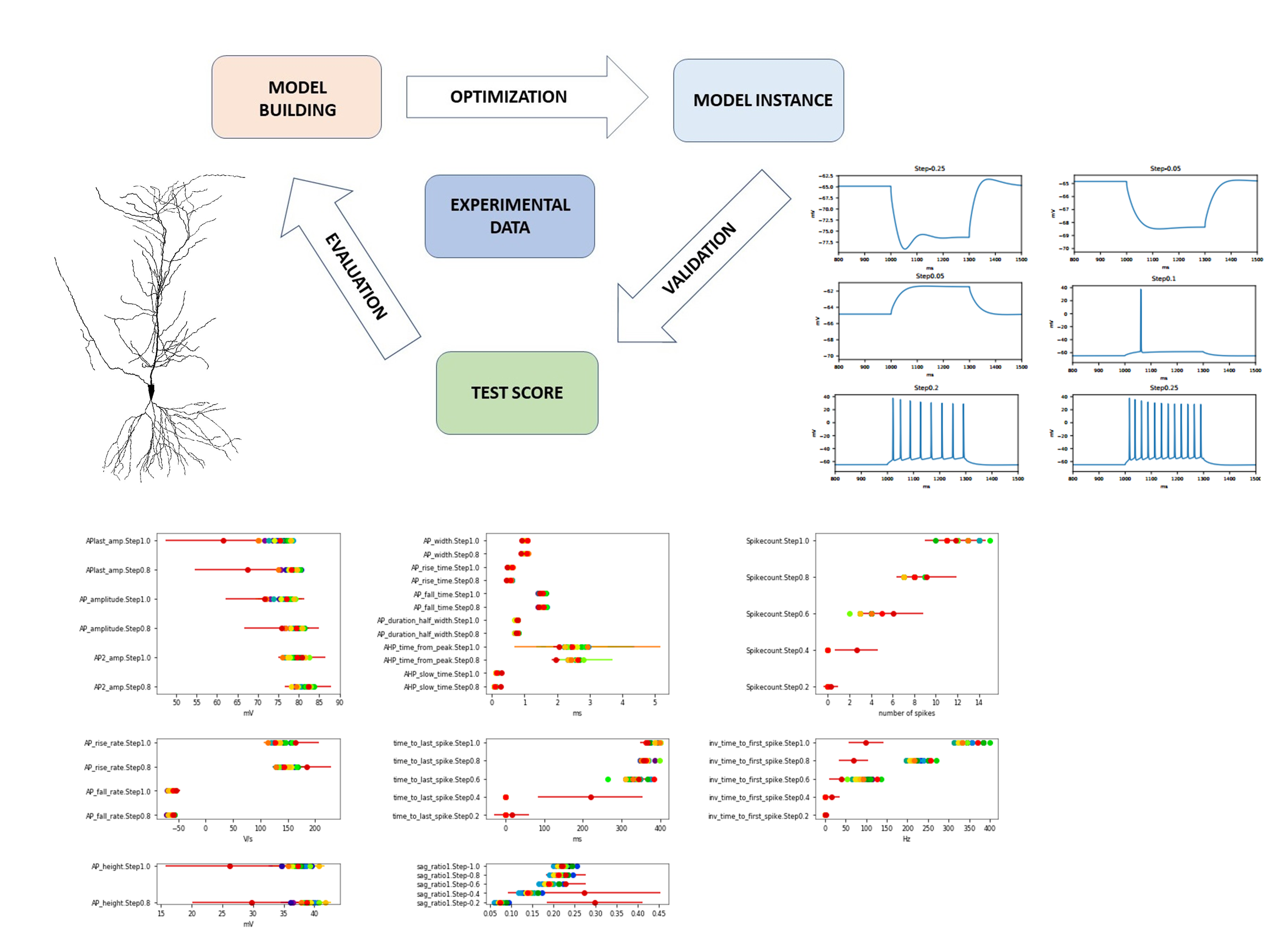- Head of Research Group: Prof. Tamás FREUND, Dr. Szabolcs KÁLI
- Members of the Group: Máté MOHÁCSI, Luca TAR, Gábor FARKAS, Boglárka SZABÓ
- Contact: kali.szabolcs@koki.hu
- The Computational Neuroscience research group uses various mathematical and simulation tools to study the dynamics and functions of both single neurons and networks in the hippocampus, often in combination with experiments conducted in the lab. Computational neuroscience offers a range of quantitative tools which allow us to describe the data in a succinct manner, to formulate our hypotheses about neural function clearly and precisely, and to link different scales and levels of organization through the appli- cation of mechanistic models.
- Models are on the one hand constrained by experimental data and, on the other hand, provide novel predictions which are testable using experimental methods. Some of the main focus areas of our group are the following: synaptic integration and nonlinear processing in neuronal dendrites; the origin and functions of population dynamics which are characteristic of the hippocampus, including theta and gamma oscillations and sharp wave-ripple events; the storage and retrieval of spatial and memorial representations in the hippocampus; fitting of neuronal parameters based on experimental data, and quantification of the expected precision of parameter inference.
- More information about the research group

Illustration of a data-driven modeling workflow for building detailed models of neurons. Morphological and biophysical data are used to construct models whose unknown parameters are tuned via automated methods to match electrophysiological recordings. Models are then validated in an automated manner, quantitatively comparing their behavior with experimental data from various paradigms.


